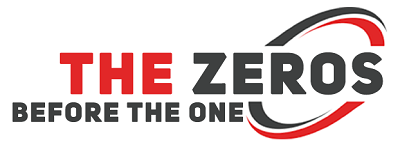With regards to waste management, acquiring a disposal plan in position is imperative. Hazardous waste is heavily controlled, and so cannot you need to be thrown by helping cover their every day-to-day trash.

To understand if you are handling potentially harmful waste, the first step should be to assess its characteristics.
When categorizing this type of waste, consider these four characteristics:
Ignitability-something flammable
Corrosivity-a factor that may rust or decompose
Reactivity-something explosive
Toxicity-something poisonous
Ignitability
You will find three kinds of ignitable forms:
Fluids obtaining a flash point-minimal costly temperature where fumes above waste ignite-of 60 levels Celsius. Incorporated within this are alcohol, gasoline, and acetone.
Solids that spontaneously combust.

Oxidizers and compressed gasses.
Corrosivity
Corrosive substances, for example muriatic acidity, nitric acidity, and sulfuric acidity, can spill through containers, creating the leakage of dangerous materials. To determine if the component is corrosive you can even examine its pH if it is under or much like several than or much like 12.5, or possibly the liquid has the ability to corrode steel, than corrosive. Everyday types of corrosives include battery acidity and rust removers.
Reactivity
Given their instability, reactive wastes can be quite harmful. There are a number of conditions and situations to understand a variety of reactive materials, requirements for example most typical:
– A cloth that’s unstable, and routinely encounters violent change without detonating
– A cloth that shows possibility of explosive mixture or violent reaction when together with water
– Materials that may react producing toxic gasses that are released within the atmosphere when along with water
Toxicity
Poisonous materials pose an excellent threat for the atmosphere, that may have extended-term effects on human medical health insurance the weather. Acute toxicity involves dangerous effects in a organism utilizing a single or short-term exposure. Common kinds of toxins are fertilizer, raw sewage, pesticides, herbicides, chemical toxins, deadly deadly deadly carbon monoxide, sulphur dioxide, nitrogen dioxide, asbestos, ground-level ozone, lead (from aircraft fuel, mining, and industrial processes).
What exactly is a hazardous waste management plan
Inside a organisation, a concept is required to tell and provide guidance for the employees about guidelines and laws and regulations and rules and rules that regulate the disposal of harmful waste. The program also defines roles and responsibilities and will be offering the framework some thing in situation of emergency to make certain that any challenges of contamination may be contained.
The program provides comprehensive guidelines on the way to handle waste as soon as the waste is produced, while it’s transported, treated, and stored, and until it’s discarded. Requirements for example phases this program includes:
- Hazardous waste generation
- Hazardous waste accumulation
- Hazardous waste transportation
- Hazardous waste treatment (recycling, treatment, disposal)
For the plan to work, each process or department that creates the waste should have a number of person attend training conducted getting a dangerous waste coordinator. Attendees can result in their departments’ compliance while using the Hazardous Waste Management Plan. The hazardous waste coordinator determines when you need to have follow-up training.
Generation
Entities that generates waste will be the initial link within the hazardous waste management system. All generators must decide if their waste is hazardous and may oversee the most effective fate within the waste. Furthermore, generators must make certain and fully document the hazardous waste they produce is correctly identified, managed, and treated before recycling or disposal.
Accumulation
All areas that creates harmful waste should have a satellite accumulation site. A satellite accumulation area could be a safe location having a sign indicating that it’s place for accumulating hazardous waste. The place can be utilized only as being a collection spot for hazardous materials until they’re removed for that primary hazardous waste space for storing. It must be at or near in which the hazardous waste is generated and become easily controlled and merely visually inspected. The therapy lamp must have good ventilation and, where possible, secondary containment in situation the main container leaks.
Each time a container is full, it must be gone following the primary waste space for storing getting an experienced coordinator. This primary space for storing needs to be inspected regularly along with the conditions have to be reported round the form stored within the appropriate space for storing.
Transportation
It will always be a good idea to call a professional disposal plan to take proper proper proper care of your undesirable hazardous waste. They might provide tips and guidelines on the way to handle your waste correctly and the ways to store it to minimise risks once the waste should be moved and discarded.













